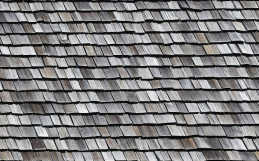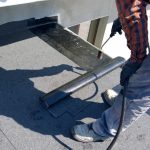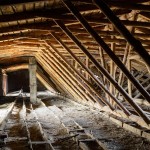Mostly found on manufacturing or other commercial building roofs, there are still a small number of residential homes that utilize a flat roof. Found throughout Europe, architects from a century ago, and the mid-century modern 50 years later, flat roofs certainly give the home a unique look.
There are also practical uses for flat roof design. Commercial buildings use the roof to install large ventilation equipment. For residential uses, flat roofs are more economical and even provide a little extra living space.
And, as we stated earlier, a flat roof is usually cheaper than installing a pitched roof. With less square footage of roofing material, flat roofs are inherently more cost-friendly. However, these types of roofs also have built-in problems that must be addressed during installation.
Where Does The Water Go?
When it rains, or snow and ice are melting, a pitched roof sends the water cascading down to the gutters where it is taken away from the house. With a truly flat roof, that can’t happen. In all actuality, flat roofs aren’t totally flat for this reason.
Often, small parapet walls are installed around the edges of a flat roof to give the appearance of a completely flat roof. In these walls, there are holes where water is able to leave the roofs. Of course, any poorly installed roof is going to leak, including sloped roofs with asphalt shingles, cedar shakes, or metal roofing.
With a flat roof, extra care needs to be taken during installation or during roofing repairs. Without regular maintenance, the roof membrane will take a beating from our four-seasons of weather in the Pacific Northwest. The sun may be the biggest culprit, causing the roof to crack and bubble.
These imperfections are common problems on flat roofs. Results can include standing water, roof leaks, and other water damage to the home. Even if the roof is in great shape, leaves, smaller branches, and other debris that finds its way on to your roof can cause ponding water.
During the winter, this water could freeze, thaw, and freeze again. Any imperfections at all will be magnified during this process. While even sloped roofs need to be maintained, make sure to have a flat roof inspected after every storm to clear debris.
A flat roof does offer one advantage: If there is a safe way to get to the roof, any homeowner can perform spot inspections and clear away debris. During the fall and winter months, heading up and taking a look around every few weeks can keep pools of water from forming.
However, if you keep finding pooling water, even when no debris is visible, it may be time to call in a professional for some flat roof repair or even have the roof replaced. Compared to other roofing materials, flat roof materials don’t hold up to our weather as well as even standard asphalt shingles.
There are certainly some very attractive benefits of having a flat roof that’s accessible. The roof can be inspected more often and it is easier to maintain in some cases. But there are drawbacks as well, especially with standing water.
Are you currently living in a home with a flat roof and starting to see warning signs of a damaged roof? These could be water spots on the ceiling or even mold and mildew growing on the walls. Not only is that a structural issue, but it will also affect the health of you and your family.
Contact Warner Roofing and Construction today and we’ll come out and take a look. We have years of experience repairing, maintaining, and replacing roofs and can make sure everything is up to code. Thinking of installing skylights? Or just need us to perform annual service on your roof? We’ll be here – just give us a call.







